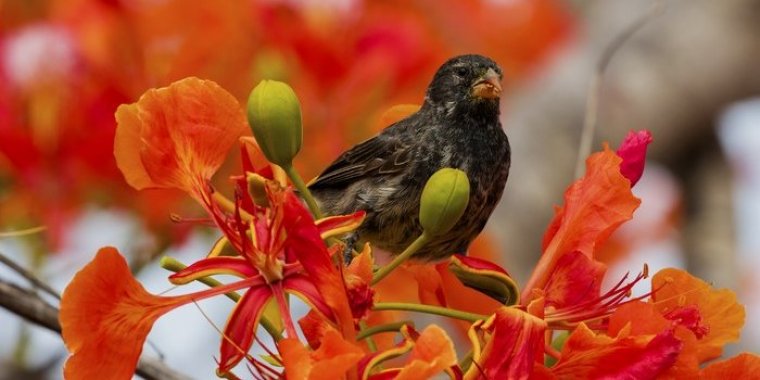| News / Science News |
Baby birds tune in from egg
Ever wondered why birds seem born to peep, chirrup and sing? Surprisingly, international avian experts have shown this to be true after finding fluctuations in bird species' heartbeat responses to their parents' calls -- even from inside the egg.

A vocal learning Darwin's small ground finch, one of 17 Darwin's finch species on the Galápagos Islands. Photo: D Colombelli-Négre
Using non-invasive techniques, a study led by Flinders University scientists and their colleagues found evidence of prenatal auditory learning in embryos of three vocal learning species -- the superb fairy-wren, red-winged fairy-wren and Darwin's small ground finch -- and two vocal non-learning species -- the little penguin and Japanese quail.
"Vocal production learning is only believed to occur in seven lineages of birds and mammals, including humans," says biologist Sonia Kleindorfer.
"This research will hopefully inspire more study into the remarkable capacity of animals to learn sound. By moving the time window for sound learning to the prenatal stage, this research direction opens pathways to measure neurobiological downstream effects of early auditory experience on behavior and information processing."
The researchers measured the vocal learning concepts in embryo behavior and response to sound within the egg using change in heart rate as the response variable -- well before birds hatch and start making complex calls or songs, which normally occurs several months or even years after birth.
"By studying the capacity for sound learning in embryos, we are paving the way to new inroads into evolutionary and developmental timescales," says first author Diane Colombelli-Négrel.
"Long before actual vocalization, we found that these tiny songbirds were also discriminating towards non-specific sounds and capable of 'non-associative' -- not from parents -- sounds, building on the complexity of vocal learning in songbirds."
Kleindorfer says there are many forms of vocal learning but vocal production learning by far stands out as a hallmark achievement in seven orders -- primates, songbirds, parrots, hummingbirds, cetaceans, pinnipeds and bats. Among primates, "only humans can do it."
"As a result of the rarity of vocal production learning, animals have been grouped into so-called 'vocal learners' -- those that learn to imitate a vocalization from a vocal tutor -- and 'vocal non-learners' -- animals that produce vocalizations without imitating a vocal tutor." (National Science Foundation)
YOU MAY ALSO LIKE





